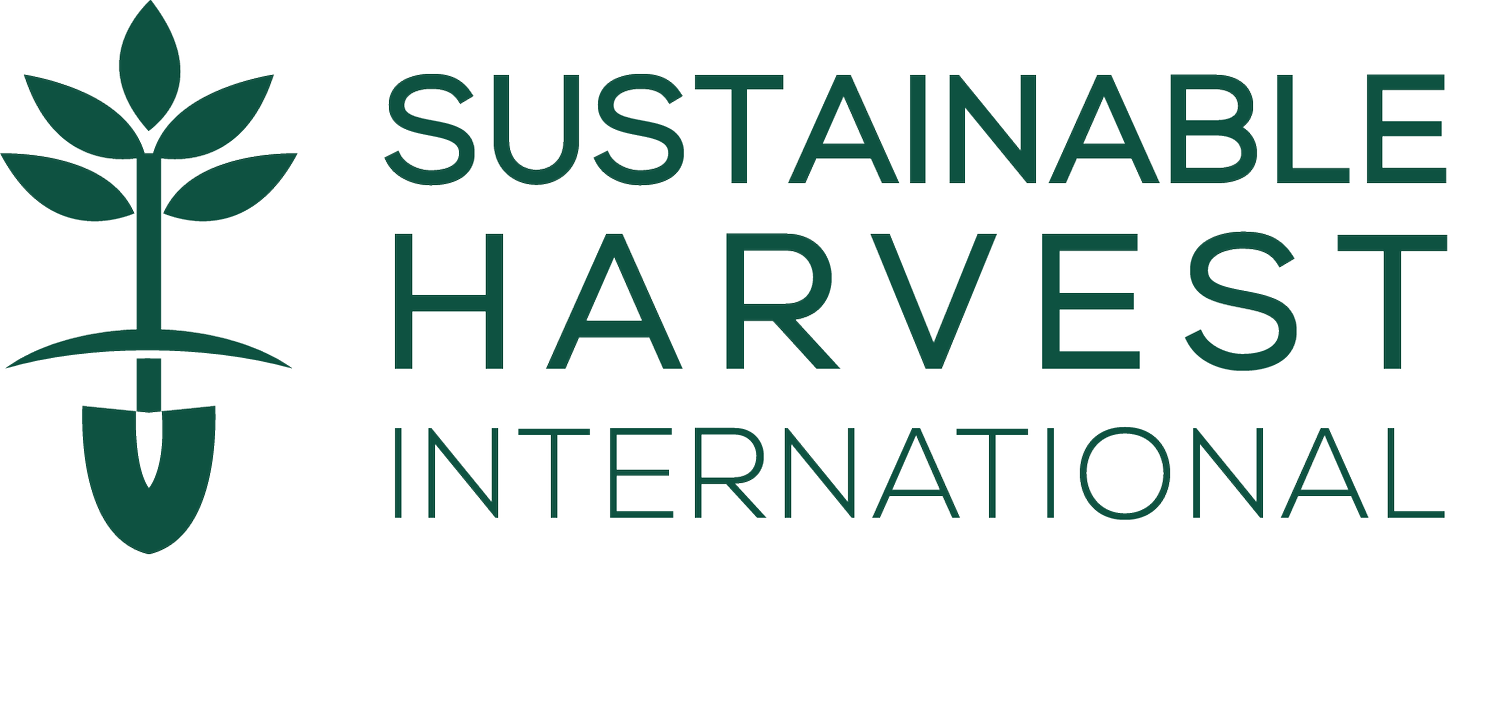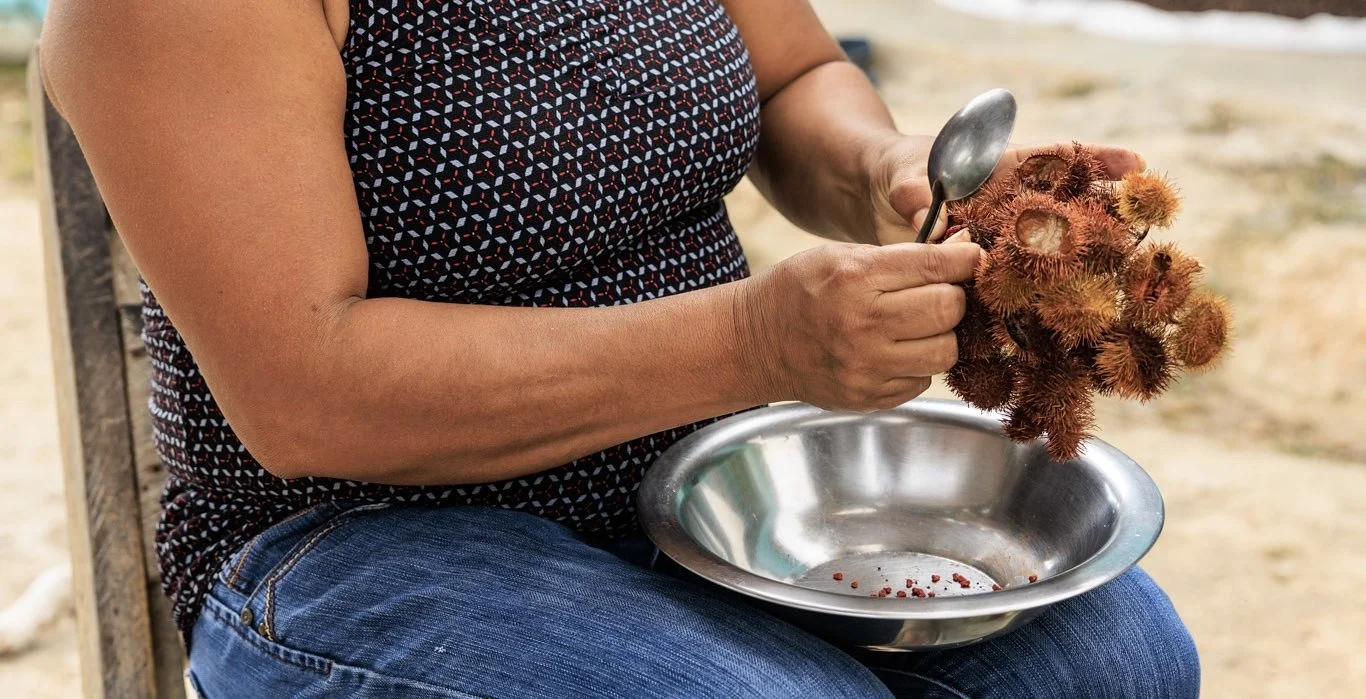How family farmers improve the environment
Sustainable practices ensure the longevity of farms by restoring the natural resources they rely on. Soil health, the restoration of local ecosystems, and the use of organic methods combine to create a healthy, productive farm. At Sustainable Harvest International (SHI), we support low-income farmers during their transition to sustainable practices. Many farmers initially learn conventional methods that degrade the soil with harsh chemicals and deforestation. Alternatively, when farmers adopt sustainable practices, they experience higher yields as a direct result of caring for natural resources. Sustainable farming leads to increased food production, and increased food production leads to sustainable agribusinesses.
SHI-Panama partner farmer Melania Pérez harvests chili peppers and beans from her family garden.
How family farmers boost the local economy
For low-income farmers, livelihoods are a lifeline. Ensuring the continuity of the farm means the family can continue to feed themselves while earning an income to send their children to school, access medical care, and invest in their home. Farmers in SHI’s program develop profitable organic products that boost income and allow a family to thrive. For example, Sintia of Belize sells pineapple jam in addition to raw pineapples. This concept of adding value to a raw product to significantly boost profit is called value-added agriculture, and it benefits livelihoods and family well-being.
SHI field trainers work with farmers to identify ways to add value to their crops with possibilities ranging from hats to baked goods, such as SHI-Honduras field trainer Consuelo’s empanada recipe. Increasing the market value of crops creates opportunities for multiple streams of income that are needed for basic necessities including healthcare, education, and housing. By sustaining themselves and generating surplus for sale, smallholder organic farmers contribute to environmental restoration while bolstering the local economy. In the final stages of SHI’s program, farmers learn to create, market, and sell organic products, turning excess harvests into profitable small businesses.
SHI-Panama partner farmer Sonia Navas sells hats she makes from her acorn tree.
Family farmers are the backbone of rural communities. On top of providing a nutritious source of food, they bolster the local economy by creating local food systems. However, they can only fulfill this crucial role if their small agribusinesses thrive.
Smallholder farmers who use conventional agricultural techniques may have a successful farm for a short period of time, but these techniques disrupt the soil and eventually lead to barren land. Without training in regenerative agriculture, farmers trying to provide for their families and communities eventually struggle to grow food. Assisting family farmers with the resources and tools needed to create prosperous and sustainable family-owned businesses is an effective way to restore the planet and support sustainable rural development. A strong local economy enhances the community’s resilience, especially as unprecedented events such as the COVID-19 pandemic demonstrate the fragility of global systems.
How regenerative agriculture improves livelihoods, as told by Ruben Mendez
In northern Belize, the conventional sugarcane industry dominates the economy. The industry’s practices contribute to high deforestation rates and increased development, threatening environmentally unique and biodiverse landscapes. Large companies provide jobs, but the majority of the profit benefits company stakeholders overseas.
Smallholder farmers, however, benefit local economies and communities more than large corporations. Smallholder farmers like Ruben Mendez work hard to build businesses that move away from the extractive sugarcane industry. Since joining SHI’s program, Ruben has gained the confidence and motivation to produce healthy, nourishing foods.
SHI-Belize partner farmer Ruben Mendez walks through his regenerative farm.
For years, Ruben dreamed of cultivating his own garden, but resources were scarce, and he lacked the skills to farm efficiently. Now, with the support of SHI-Belize, the Mendez family is able to maintain their crops, and even has plans to expand their regenerative farm. They work closely with neighbors, including a local taco vendor, to create new organic products that their community values.
Ruben is driven by a deep commitment to his land and the health of his community. He sees firsthand how a farmer can “save money and improve [their] diet,” especially during a time of rising vegetable and fruit costs. With his newfound skills, Ruben is proud to provide quality food using local, natural materials, reducing his reliance on costly materials such as chemicals and synthetic fertilizers.
SHI partner farmers like Ruben transform their lives and family’s lives by adopting regenerative agricultural practices. They also create and expand small businesses that contribute to the community’s local economy. Their role as community leaders cannot be underestimated, and it should be supported so they may continue to make a difference.
By Tania Roa, our Communications + Outreach Coordinator










